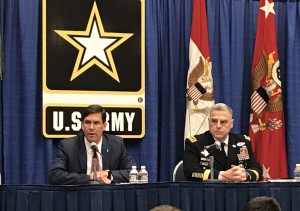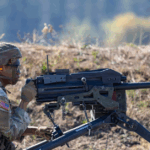
Top Army leadership has identified at least $25 billion in proposed funding over the next five years that it plans to shift from equipment items to its top modernization and readiness priorities, with the number expected to grow as officials begin assessing lower tier manning and training priorities.Army Secretary Mark Esper told reporters at a Monday press conference that $25 billion is the initial number for what will be moved to meet modernization priorities aligned with standing up its new…

 By
By 











